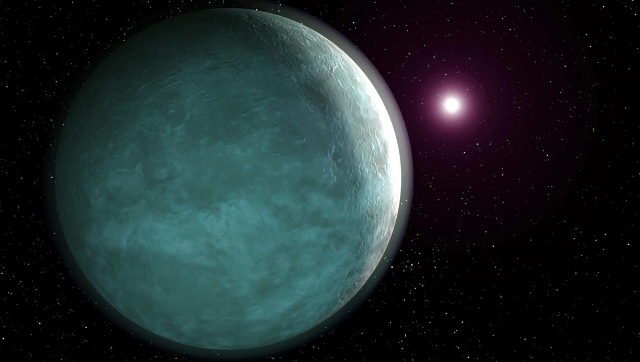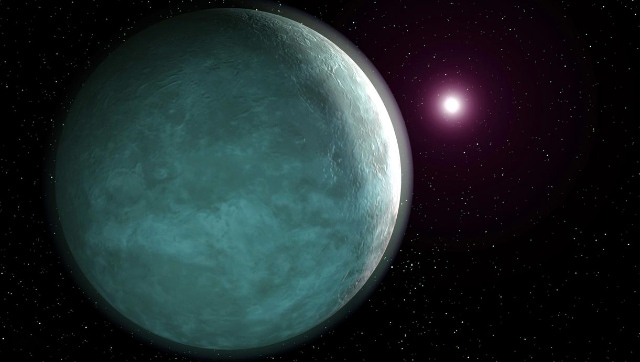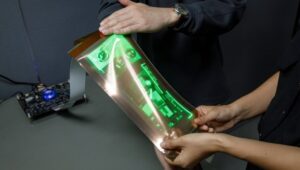
Scientists are baffled by an exoplanet just outside our Solar System, where it rains titanium from metal clouds. The planet, codenamed LTT9779b, has an average temperature of 2000 degree Celsius during winters, and reflects 80 per cent of the light that falls on it
Imagine a place where the average temperature, during winters, is 2000 degrees celsius, where it rains titanium drops, from clouds made of metal. No, we are not talking about hell, but a new planet discovered by scientists who are completely baffled and at a loss of words. They believe that under such circumstances a planet shouldn’t exist.
A group of astronomers announced on Monday that they have discovered a scorching planet that stands out as the most reflective ever observed just beyond our Solar System.
A super reflective planet with clouds of metal
Situated over 260 light years away from Earth, this peculiar planet reflects approximately 80 per cent of the light emitted by its host star, as revealed by recent observations from Europe’s Cheops space telescope, dedicated to studying exoplanets. This makes it the first exoplanet known to possess a similar level of reflectivity as Venus, the brightest celestial object in our night sky after the Moon.
Dubbed LTT9779b and initially detected in 2020, this Neptune-sized planet completes an orbit around its star in just 19 hours. Due to its close proximity, the side of the planet facing the star experiences blistering temperatures of 2,000 degrees Celsius, a climate deemed too hot for the formation of clouds.
Surprisingly, LTT9779b seems to possess clouds despite the inhospitable conditions. Vivien Parmentier, a researcher from France’s Cote d’Azur Observatory and co-author of a study published in the journal Astronomy and Astrophysics, described the discovery as a puzzle.
Parmentier likened the cloud formation to the condensation that occurs in a bathroom after a hot shower, suggesting that an oversaturated atmosphere of metal and silicate particles, akin to the materials used in making glass, led to the formation of metallic clouds.
Apart from its highly reflective nature, LTT9779b deviates from other known exoplanets in various aspects. Planets found to orbit their stars in less than 24 hours are typically gas giants ten times the size of Earth or rocky planets half its size.
An outlier in many other ways
However, LTT9779b resides in a region referred to as the “Neptune desert,” where planets of its size are not expected to exist. Parmentier expressed surprise at the planet’s existence, as the prevailing assumption suggests that such planets should have their atmospheres stripped away by the gravitational forces of their stars, leaving behind barren rocks.
Remarkably, the metallic clouds present on LTT9779b serve as a protective mechanism by reflecting light and preventing the planet’s atmosphere from being eroded. Maximilian Guenther, the project scientist for the European Space Agency’s Cheops mission, likened the clouds to a shield, akin to the shields depicted in Star Trek movies. This research represents a significant milestone as it sheds light on how a planet the size of Neptune can survive in the challenging conditions of the Neptune desert.
The Cheops space telescope, launched by the European Space Agency in 2019, was designed to investigate exoplanets outside our Solar System. In this particular study, the telescope measured the reflectivity of LTT9779b by comparing the amount of light before and after the planet passed behind its star.










